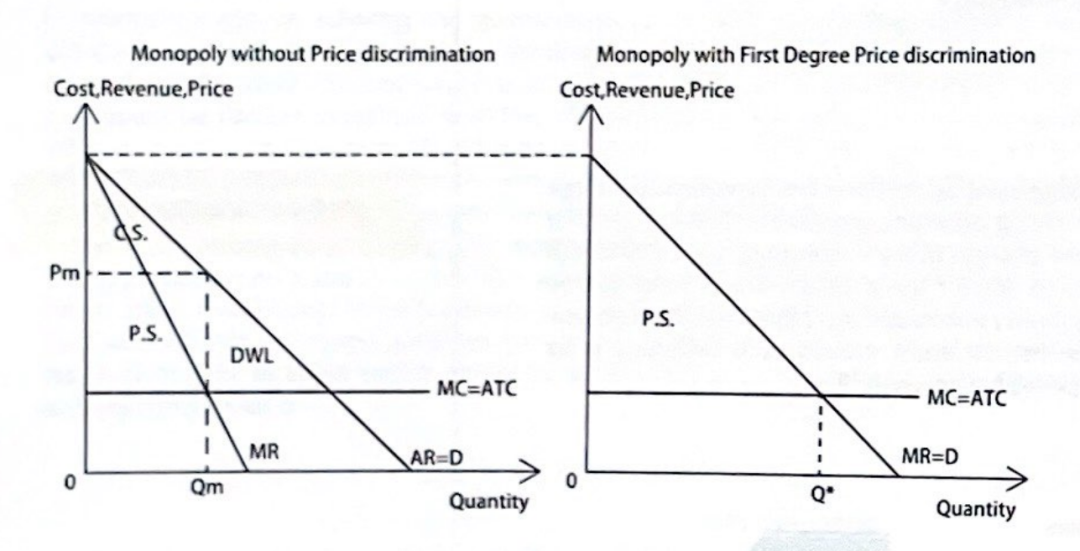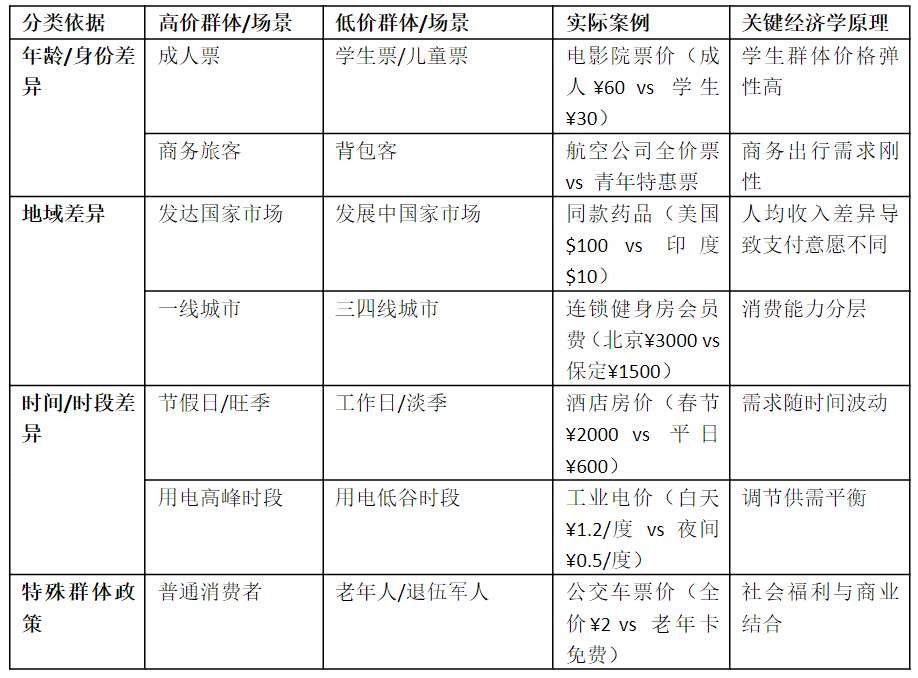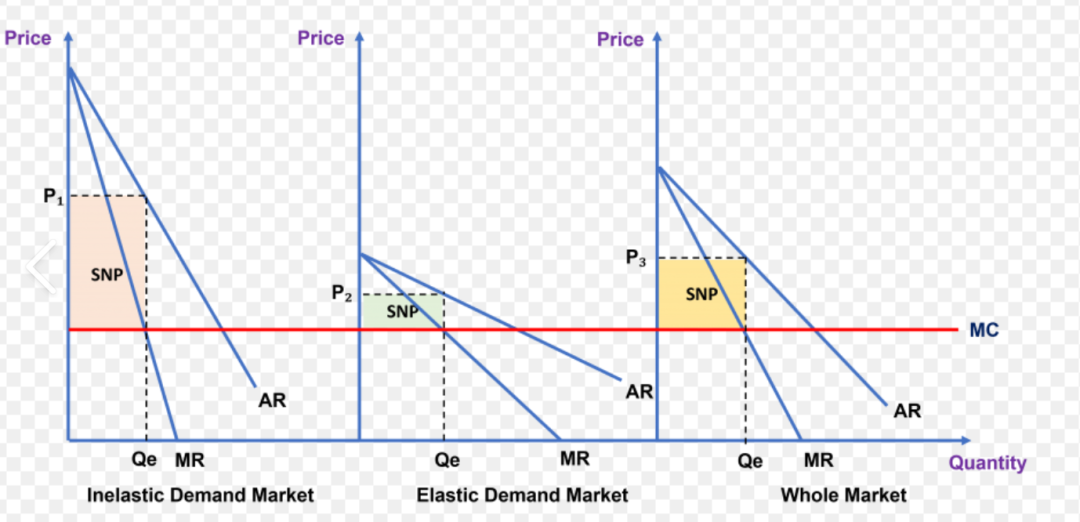备赛的同学们要注意,价格歧视是NEC重要考点。本文精炼讲解三级价格歧视的核心特征、实施条件及典型应用场景,并附NEC真题解析,助你快速掌握这一关键概念,提升竞赛应试能力!



价格歧视是一种销售策略,即在不同的市场中为相同商品或服务向不同消费者收取不同的价格。


1st degree Price discrimination = perfect price discrimination

A firm is able to charge each customer a different price. That price is the maximum price the customer will pay. As a result consumer surpluswill be completely extracted by the monopolist andconverted to producer surplus.
e.g. Auctions, personalized pricing, market haggling
一级价格歧视是指垄断者对每个消费者按其最高支付意愿(WTP)收取不同价格,完全榨取消费者剩余(CS→0)。一级价格歧视就是完全价格歧视其实是看人定价。产品的价格不是由成本决定的,而是消费者心中的价值决定的,是消费者认为你的产品值多少钱,所以这里涉及“消费者剩余”的概念,Consumer surplus =the maximum Willingness to Pay (WTP) - Actual Price Paid。企业通过对每单位商品收取消费者愿意支付的最高价格,结果会导致生产者剩余(PS)= 全部潜在消费者剩余(CS)+ 原垄断利润 + 无谓损失(DWL),所以消费者剩余(CS)= 0. 生产持续到P=MC(与完全竞争市场相同),资源配置有效率, 无谓损失(DWL)=0。
以下是一级价格歧视的图像


A monopolist charges customers according to how much they buy.
二级价格歧视是按需求量定价,也就是买得越多越便宜。
比如买一个纪念品,老板告诉你120元一个,你问老板如果我买10个能不能便宜,老板很爽快的答应只收你1000元,优惠200,老板又说,如果你买15个我按一个90元给你,于是你爽快的买了15个纪念品。买得越多越便宜。公司的目的就是通过买的数量给予折扣,鼓励大批量购买。

Charging different prices to groups of consumers segmented by price elasticity of demand, income, age, gender.
三级价格歧视是按可观测群体特征(如年龄、地域)差异化定价。比如,对价格需求弹性小的群体定高价,价格需求弹性大的群体定低价。

三级价格歧视图像分析, 最右是不进行价格歧视的市场,价格为P3。 最左是inelastic demand 的市场,P1较P3高(如成人票价)。中间是elastic demand的市场,P2较P3低(如学生票价)。

条件
Conditions hold for monopolist is to be able to price discriminate effectively:
▶️The firm must have market power, that is, the firm has a downward sloping demand curve.
▶️The consumer must have different willingness to pay or different PED.
▶️The firm must have information about consumers’ willingness to pay or PED.
▶️The firm must have a mechanism for keeping the market separate.
▶️The consumers must have limited ability to resell the product.






